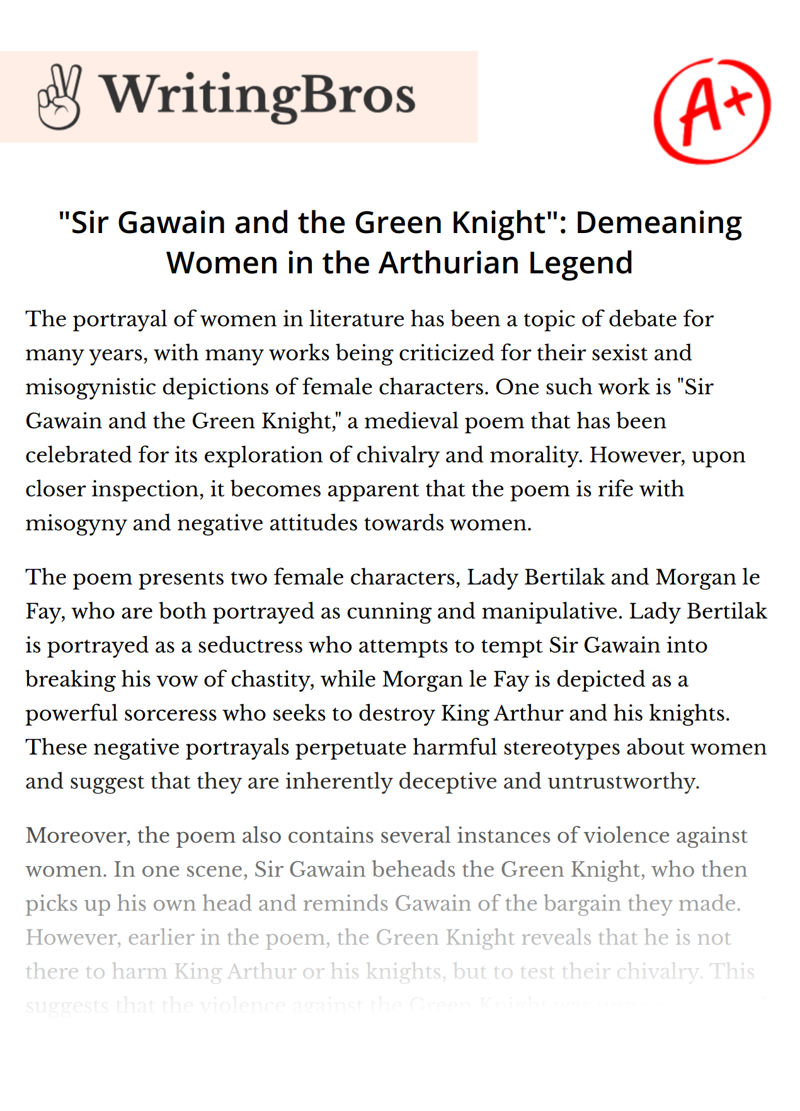"Sir Gawain and the Green Knight": Demeaning Women in the Arthurian Legend

The portrayal of women in literature has been a topic of debate for many years, with many works being criticized for their sexist and misogynistic depictions of female characters. One such work is "Sir Gawain and the Green Knight," a medieval poem that has been celebrated for its exploration of chivalry and morality. However, upon closer inspection, it becomes apparent that the poem is rife with misogyny and negative attitudes towards women.
The poem presents two female characters, Lady Bertilak and Morgan le Fay, who are both portrayed as cunning and manipulative. Lady Bertilak is portrayed as a seductress who attempts to tempt Sir Gawain into breaking his vow of chastity, while Morgan le Fay is depicted as a powerful sorceress who seeks to destroy King Arthur and his knights. These negative portrayals perpetuate harmful stereotypes about women and suggest that they are inherently deceptive and untrustworthy.
Moreover, the poem also contains several instances of violence against women. In one scene, Sir Gawain beheads the Green Knight, who then picks up his own head and reminds Gawain of the bargain they made. However, earlier in the poem, the Green Knight reveals that he is not there to harm King Arthur or his knights, but to test their chivalry. This suggests that the violence against the Green Knight was unnecessary and serves only to reinforce the idea that violence is an acceptable means of resolving conflicts.
Another example of violence against women in the poem is when Sir Gawain is asked to choose between his own life and that of Lady Bertilak. While he ultimately chooses to spare her life, the fact that this choice is even presented suggests that women's lives are seen as expendable and of little value.
In addition to these negative depictions of women, the poem also fails to give female characters agency and autonomy. Lady Bertilak is used solely as a pawn in the game of the Green Knight, while Morgan le Fay is presented as a villain with no motivation beyond a desire for power. This lack of agency reinforces the idea that women are passive objects to be controlled and manipulated by men.
In conclusion, "Sir Gawain and the Green Knight" may be celebrated for its exploration of chivalry and morality, but it is also a prime example of the harmful attitudes towards women that were prevalent during the medieval period. The negative portrayals of female characters as deceitful and manipulative, the instances of violence against women, and the lack of agency and autonomy given to female characters all contribute to the poem's perpetuation of harmful gender stereotypes. It is important that we recognize and critique these attitudes, both in medieval literature and in contemporary society, in order to work towards a more just and equitable world.
Cite this Essay
To export a reference to this article please select a referencing style below

